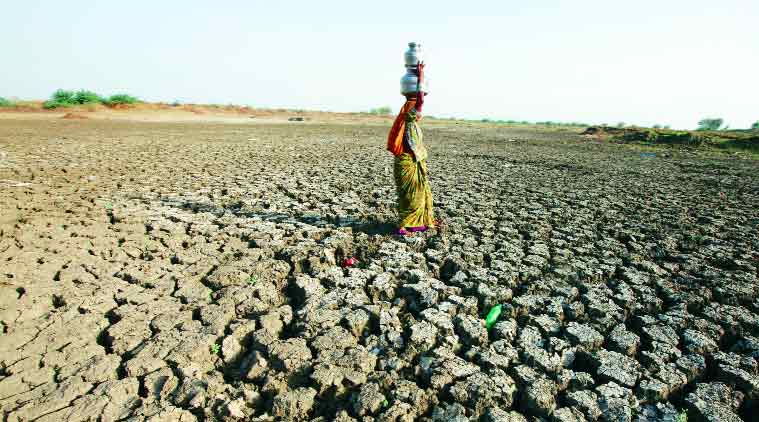 Courtesy of Mr.Gaurav Bhosle via WikiMedia
Courtesy of Mr.Gaurav Bhosle via WikiMedia
Water: A Tool for Peace and Diplomacy
Population growth, industrialization, and urbanization across the globe have increased the demand for water beyond the available amounts. Combined with poor water maintenance, the rising demand for water has left over half of the world’s population facing “extremely high” or “high” levels of water stress. As COVID-19 infection and death rates continue to rise, the pandemic is highlighting the pressing urgency to address escalating water insecurity around the world. Large cities are nearing total exhaustion of their water supplies. South Africa narrowly averted such a “Day Zero” scenario in 2018, while Chennai, India, saw each of its reservoirs run dry. From Havana to Sao Paulo, cities throughout Latin America struggle to provide a steady supply of clean water to citizens. Meanwhile, Ethiopia, Egypt, and Sudan are clashing over a Blue Nile dam project. Such water crises will become more common and devastating as climate change exacerbates existing water stress.
With over two billion people around the world lacking access to safe drinking water and twice as many without safely managed sanitation service, the United Nations has made reducing water stress and scarcity the priority of the decade. A 2021 World Economic Report listed water crises as one of the top five threats to global security due to its wide-reaching impact, from food security and agriculture to sanitation and health.
Consequently, water diplomacy—the process of negotiating sustainable water sharing, management, and governance practices for transboundary resources—is vital to promoting a more water secure world, reducing regional instability, and advancing U.S. interests. To mitigate future water stress, water diplomacy should be prioritized in international climate action.
Water Diplomacy: A Source of Cooperation and Sustainable Development
Water has long been a source of both international conflict and cooperation. Transboundary water basins cover almost half of the world’s land surface and 153 nations share rivers, lakes, and aquifers. While states are actually more likely to cooperate when it comes to shared water resources, some evidence points to a potential recent rise in water-based conflict. One study identified five “hot spot” basins for future water-related disputes: the Nile, the Ganges/Brahmaputra, the Indus, the Tigris/Euphrates, and the Colorado River.
Water diplomacy can be an effective tool in fostering cooperation among states with shared water sources. Water sharing agreement mechanisms, such as governance meetings and prior notification for projects that may impact the shared water, requires ongoing communication between states. By facilitating greater dialogue between nations at all levels—governmental, private industry, and civil society—water diplomacy can forge deeper people-to-people and expert-to-expert connections. In addition, water diplomacy agreements can serve as frameworks for negotiation that can be used to address other potential disputes and act as a confidence-building measure between nations, allowing agreements to persist even in the presence of other regional tensions. For example, the 1960 Indus Water Treaty between India and Pakistan has remained in place despite strained relations between the countries. Despite regional tensions, Jordan and Israel signed a water-sharing treaty in 1994, which the nations renewed in 2015.
In addition, water diplomacy can support sustainable development and cross-community resiliency by incorporating multilevel stakeholders and developing shared water-sustainable practices and technologies. Adequately addressing water stress and its impact requires nations to recognize the interdependence between water, energy, food, and environmental management. The United Nations even links improved water cooperation to reaching each of the 2030 Sustainable Development Goals.
The Need for Greater Water Governance
Despite their benefits, 40% of transnational water basins around the world lack operational water sharing agreements and transnational water aquifer agreements remain rare. With global water stress only worsening, encouraging and facilitating water sharing agreements should be prioritized as part of international sustainable development and climate goals. For the United States, this means elevating the U.S. Global Water Strategy, which already outlines strengthening water sector governance as part of its strategic objectives to improve global water security, as part of its effort to coordinate multilateral climate action.
With the global water crisis only projected to worsen, water diplomacy can serve as a tool for promoting national and regional stability and sustainable development. Water diplomacy opens the door for greater cooperation between nations beyond water-sharing. The multi stakeholder dialogue built through water diplomacy can help communities create durable and sustainable management and governance systems. Investing in and promoting water diplomacy now can mitigate the coming political and environmental stress as the climate crisis worsens by building resiliency within communities and fostering a system of collaboration to meet tomorrow’s challenges.





